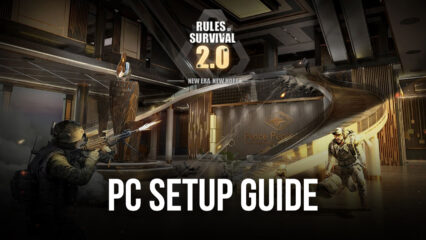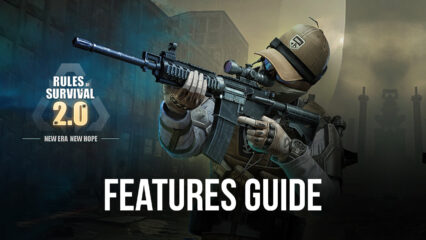Beginner’s Guide to Rules of Survival 2.0 - The Basics of Winning in the Field

Rules of Survival 2.0 has just arrived, opening a brand new chapter as a sequel to the popular mobile battle royale, this time by adding several new mechanics over the standing running, gunning, and surviving that characterizes the genre. On this occasion, gamers must not only master the field and dominate their enemies in combat, but they must also scavenge for items, craft new weapons, and prepare for their matches by arming themselves with useful equipment.
But we’re getting ahead of ourselves.
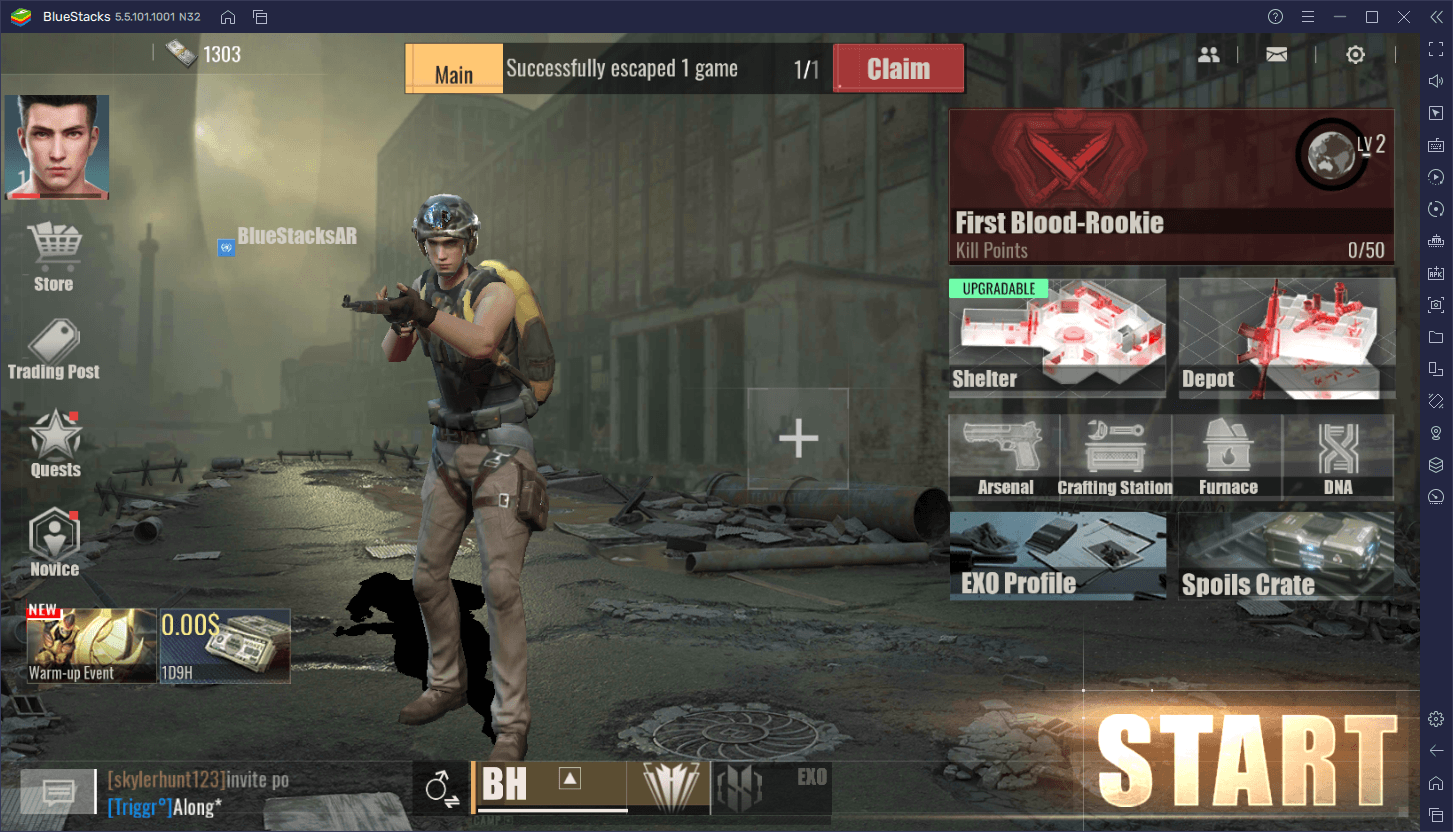
Rules of Survival 2.0 is quite straightforward and easy to grasp at the beginning. However, shortly after finishing the tutorial, you’ll notice that there’s more to this mobile battle royale than meets the eye. For this reason, we wanted to share this beginner’s guide with all our readers, so that those among you who are new and just getting started can set out on the right track.
Victory Conditions
Starting with how to win matches: Rules of Survival 2.0 is a bit different than your typical battle royale in that, in order to win, there’s more to it than just being the last person alive. In some maps and game modes, you might need to fulfill an objective in order to win, while in others, you may find the battle royale gameplay we all know and love. You can choose these game modes from the “Start” menu, and their availability will depend on the faction you have chosen. You can swap freely between factions at any moment, so choose whatever you want.

For the most part, however, you’ll probably be playing the regular patrol missions of the Exo faction, which are more like the typical battle royale experience. The idea here is to run around the map scavenging gear, materials, ammo, and anything else you can find, and then heading to an extraction point to escape. All the while, you’ll have to engage against enemy players who, more often than not, will want to kill you for your loot and gold.

As you can see, while the gameplay is very much similar to other battle royale games, the objectives in Rules of Survival 2.0 can vary greatly. Nevertheless, all of the game modes feed into another of the game’s major systems: The Shelter.
Your Shelter
Whenever you’re not in the field hunting, scavenging, and surviving, you’ll be relaxing in your shelter, which is a safehouse of sorts where you can store everything you find during your gameplay. Not only that, but this is also where you’ll progressively unlock a variety of facilities and features that will significantly expand the things you can do in this game.
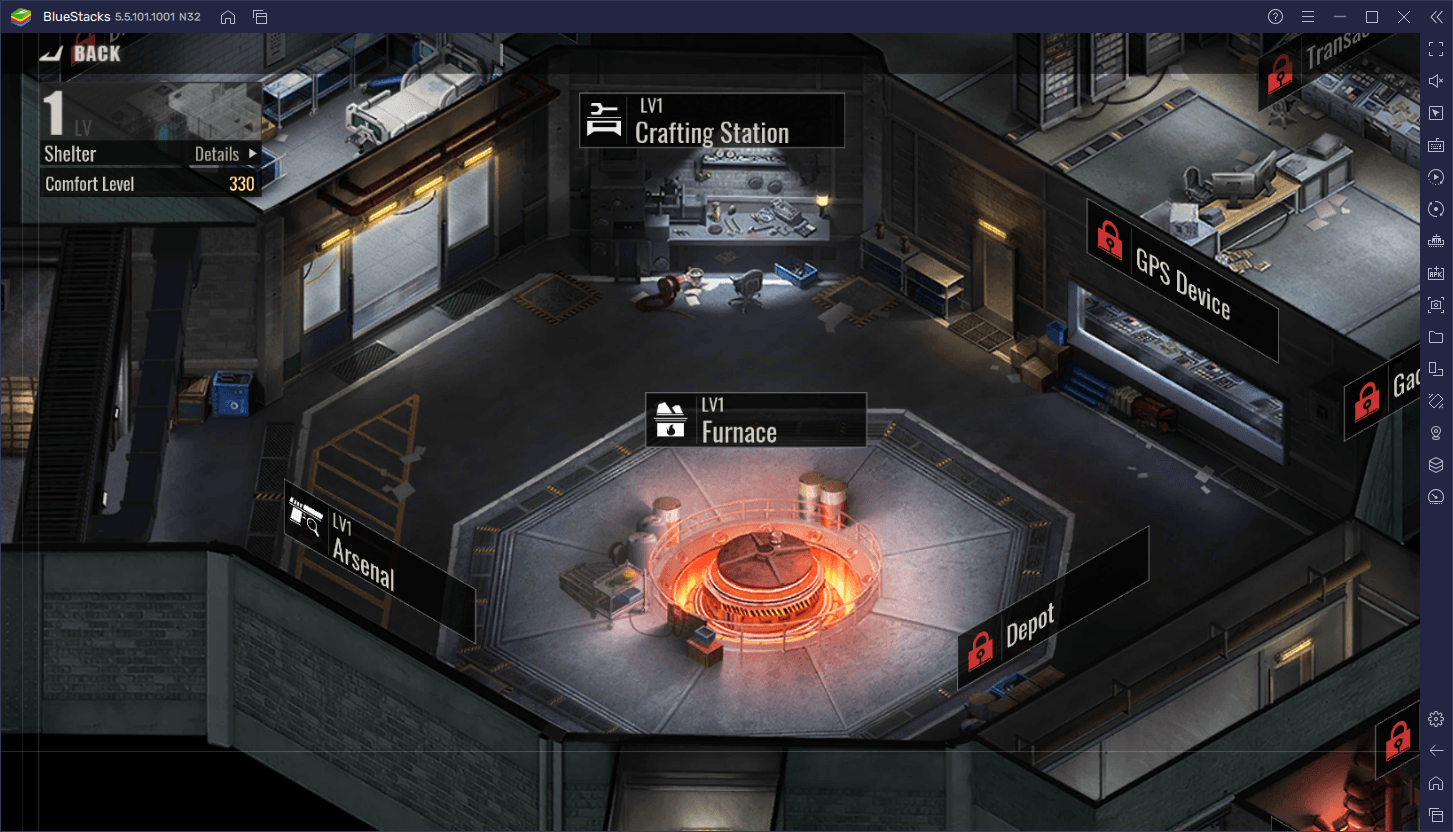
In your shelter, you’ll be able to craft new gear, dismantle unwanted items, upgrade and outfit your guns and equipment, research new technologies, and much more. However, all of these functions become available as you level up in the game, as well as by completing main quests, which we’ll talk about later on.
The Inventory and Depot System
Another of the defining features of this game is the inventory system.
Your inventory is, as you’d expect, where you’ll place all the gear you find during your travels. This is nothing new or special. However, unlike in other battle royale games, where the items you pick up during a match are lost when you finish, you can actually hold onto everything that you get during your matches in Rules of Survival 2.0. You can then transfer all of these items into your Depot to free up space in your bag, allowing you to pick up more things in subsequent matches.
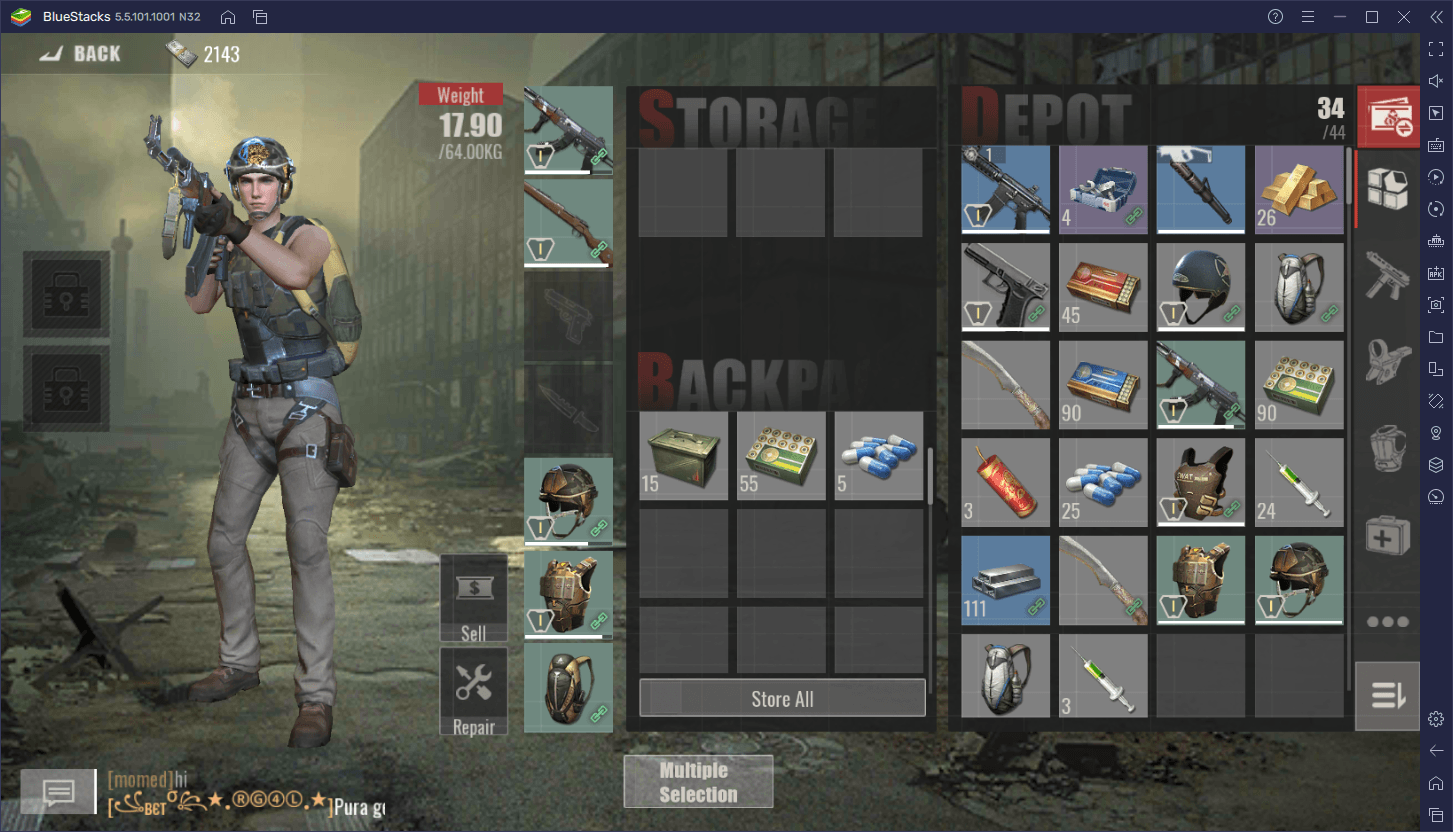
The point of this entire inventory system is that, unlike in other games, you can actually bring your own weapons and gear to battle, and therefore start the match with much better chances of actually defending yourself in combat. Furthermore, once you reach a certain point in the game, you will unlock the Trading Post, which is where you can buy and sell all sorts of items and gear, using real money.
While this effectively means Rules of Survival 2.0 follows a play-to-earn model, you never have to spend money to actually play and win matches. If anything, you’re always at risk of wasting the money you spend on gear in the Trading Post, since dying during matches drops everything that you currently have equipped.
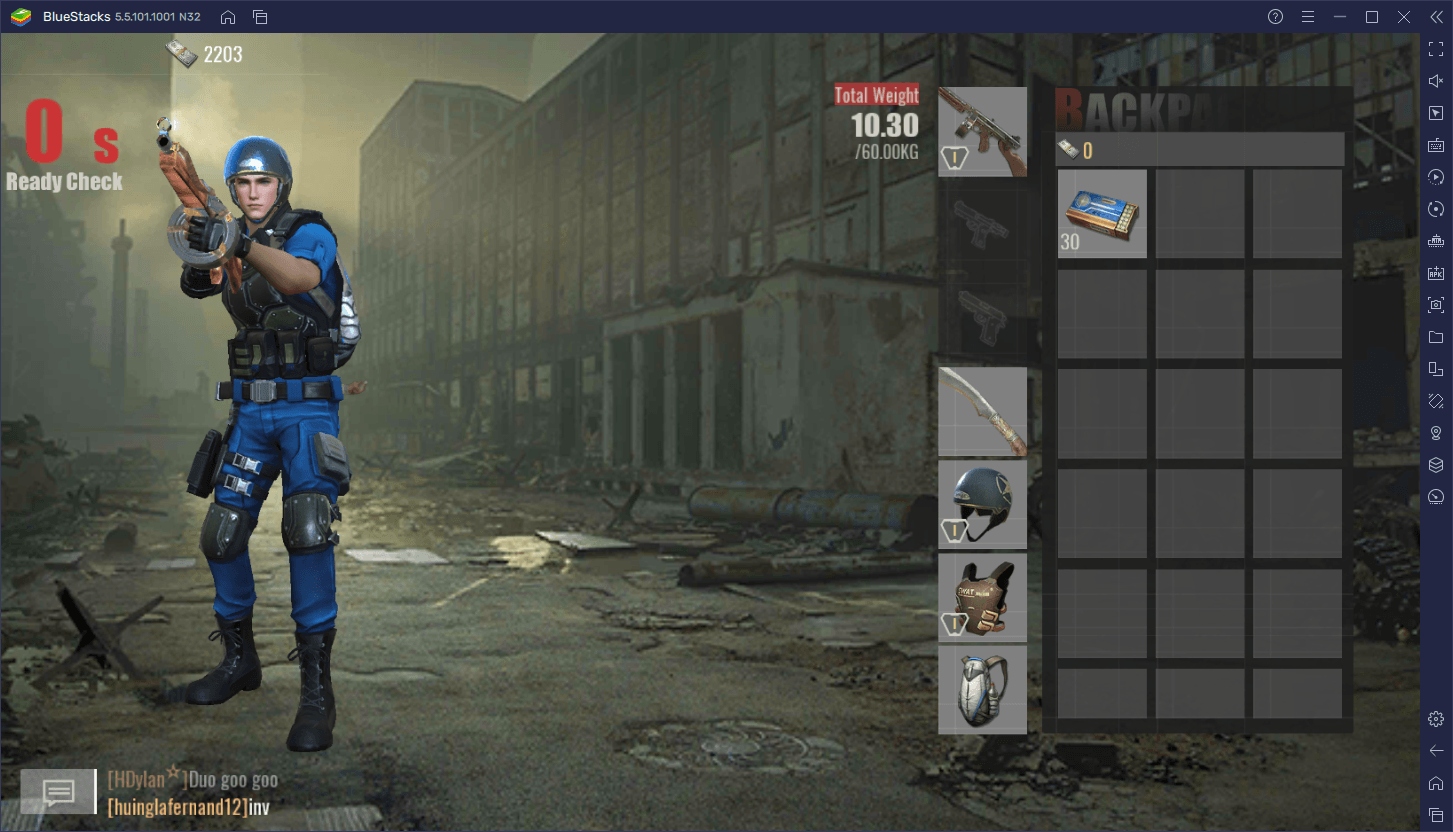
One last thing to know about both your bag and the Depot is that they both have very limited capacity. In this sense, you really can’t just go on picking everything up. However, you can always dismantle the items you won’t ever use in your shelter’s Furnace. This will effectively turn the items into raw crafting materials, as well as free up space in your depot.
Crafting and Upgrading Gear
During the tutorial, you’ll unlock the Crafting Station in your shelter. This facility is pretty straightforward: you pick what you want to craft from the list, pay the fee in crafting materials and cash, and boom: Your new item will appear in your inventory. Though you don’t have access to many complex schematics and blueprints until you upgrade this facility, the Crafting Station will be quite useful at the beginning for keeping you stocked with ammo and basic items like helmets, armor, and backpacks.
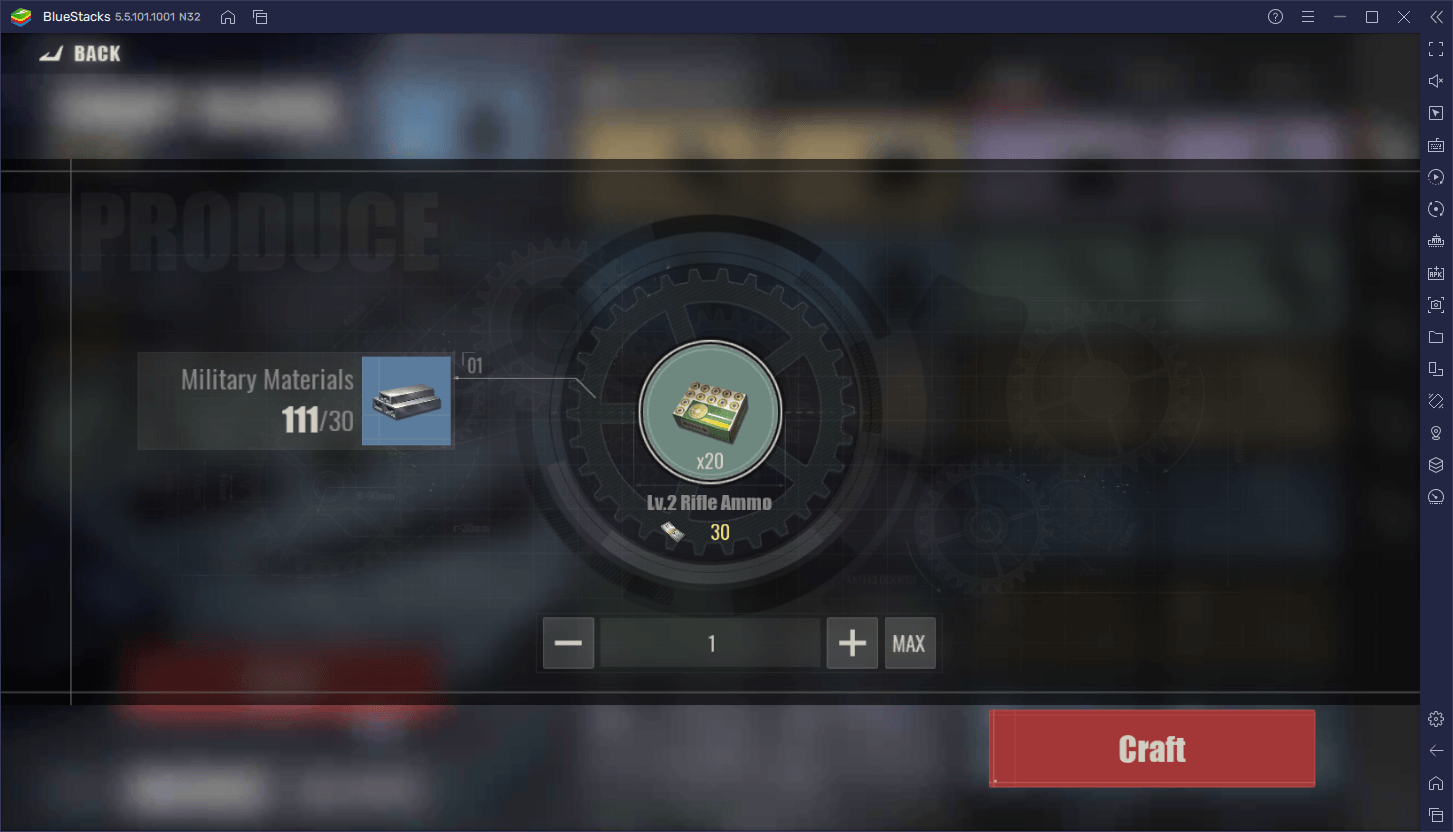
If you want, you can also craft guns, though we prefer to pick them up directly from the field.
Quests and Progression
Last but not least, the best way to progress and farm resources in Rules of Survival 2.0, aside from playing the game itself, is by completing missions. And not only that, but working through your main quests is also the primary way to unlock valuable rewards, including crafting materials, cash, and others. If anything, it’s always a good idea to work on your daily missions, since they will give you the experience to level up your account, which in turn will contribute towards unlocking new features.
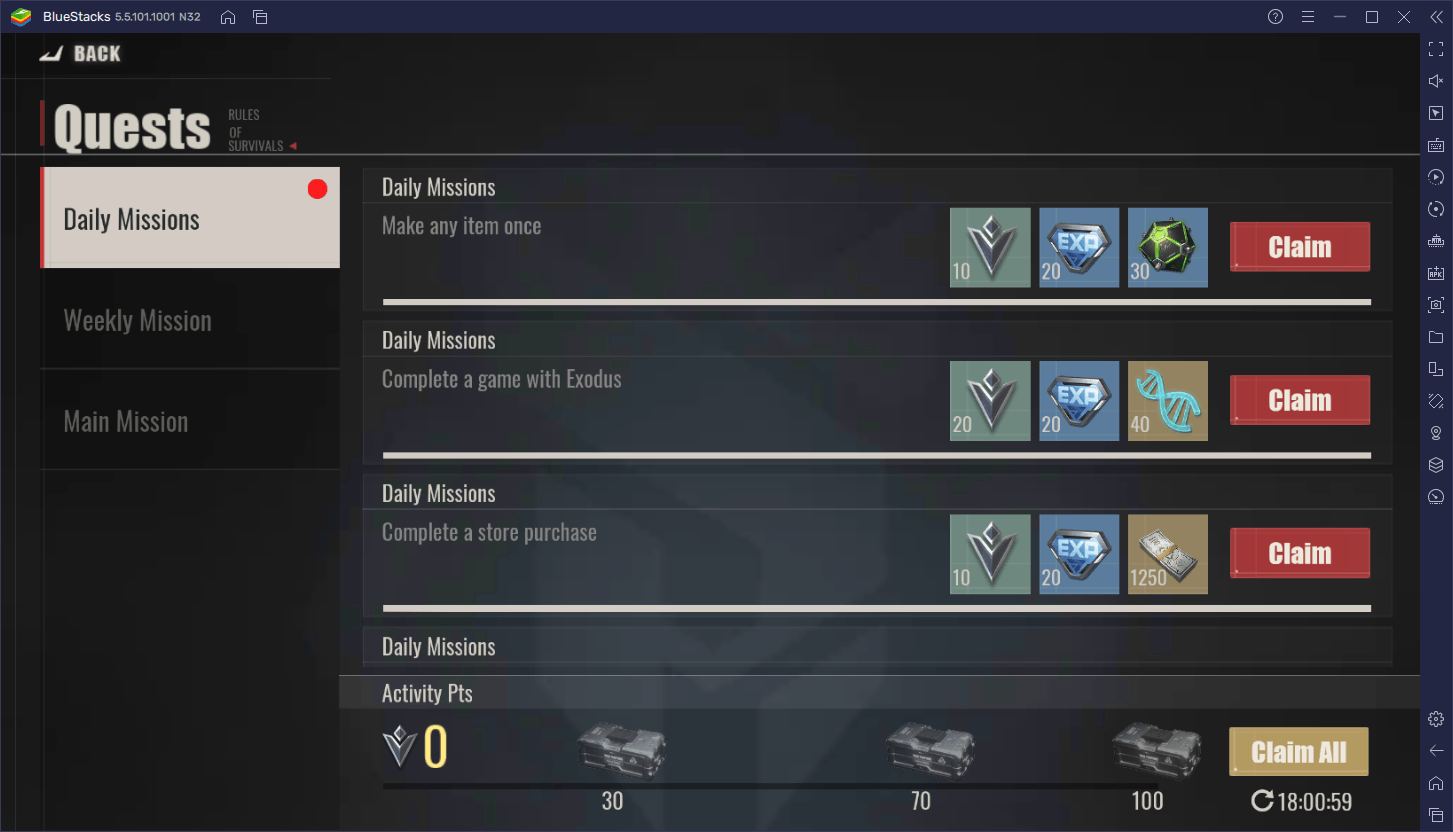
The best way to triumph in Rules of Survival 2.0 is by actually going out there and fighting other players while scavenging the most gear and items and bringing them back to base safely. It helps a lot if you play this game with the best performance, graphics, and control scheme, which is why we can’t recommend enough playing Rules of Survival 2.0 on PC with BlueStacks to get the very best experience.


